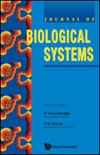EXTINCTION THRESHOLD IN A STOCHASTIC EPIDEMIC MODEL FOR ROTAVIRUS DYNAMICS WITH CONTAMINATED ENVIRONMENT
IF 1.5
4区 数学
Q3 BIOLOGY
引用次数: 0
Abstract
Mathematical models for the transmission dynamics of infectious diseases have aided our understanding of the important factors that drive epidemic patterns. In this paper, we formulate and analyze a stochastic epidemic model, a continuous-time Markov chain, in order to understand rotavirus dynamics with a contaminated environment. The assumptions of the deterministic model are utilized in the formulation of the corresponding stochastic model. We perform both local and global stability analyses of the equilibria of the deterministic model with respect to the basic reproduction number. The extinction threshold for the stochastic model and conditions for either disease extinction or persistence are derived by employing the branching process to the infectious classes only. It is shown that the probability of rotavirus extinction obtained from the branching process is in excellent agreement with the numerically approximated probability. Numerical results indicate that the probability of rotavirus extinction is the highest if the contaminated environment introduces the virus into a totally susceptible population at the beginning of the epidemic process. Thus, a major rotavirus outbreak is likely if the virus emanates from infectious children at the onset of the epidemic. Results of sensitivity analysis showed that shedding of the virus into the environment by infectious children is the most sensitive parameter of the model. Further, it is shown that decreasing the shedding rate leads to an increase in the probability of disease extinction and vice versa. This, therefore, implies that disposal of stool of infectious children should be well managed if efforts to curb further spread of the disease or even eliminating it are to bear desirable fruits.污染环境下轮状病毒动力学随机流行模型的灭绝阈值
传染病传播动力学的数学模型有助于我们理解驱动流行病模式的重要因素。在本文中,我们建立并分析了一个随机流行病模型,一个连续时间马尔可夫链,以了解受污染环境下的轮状病毒动力学。确定性模型的假设被用于相应随机模型的公式化。我们对确定性模型的平衡点相对于基本繁殖数进行了局部和全局稳定性分析。随机模型的灭绝阈值和疾病灭绝或持续的条件是通过仅对传染病类别使用分支过程来导出的。结果表明,从分支过程中获得的轮状病毒灭绝的概率与数值近似的概率非常一致。数值结果表明,如果在疫情过程开始时,受污染的环境将病毒引入完全易感人群,轮状病毒灭绝的概率最高。因此,如果病毒在流行开始时来自具有传染性的儿童,那么很可能会爆发大规模轮状病毒。敏感性分析结果表明,感染儿童向环境中的病毒脱落是该模型最敏感的参数。此外,研究表明,降低脱落率会导致疾病灭绝的概率增加,反之亦然。因此,这意味着,如果遏制疾病进一步传播甚至消除疾病的努力要取得理想的成果,就应该妥善处理感染儿童的粪便。
本文章由计算机程序翻译,如有差异,请以英文原文为准。
求助全文
约1分钟内获得全文
求助全文
来源期刊
CiteScore
2.80
自引率
12.50%
发文量
31
审稿时长
1 months
期刊介绍:
The Journal of Biological Systems is published quarterly. The goal of the Journal is to promote interdisciplinary approaches in Biology and in Medicine, and the study of biological situations with a variety of tools, including mathematical and general systems methods. The Journal solicits original research papers and survey articles in areas that include (but are not limited to):
Complex systems studies; isomorphies; nonlinear dynamics; entropy; mathematical tools and systems theories with applications in Biology and Medicine.
Interdisciplinary approaches in Biology and Medicine; transfer of methods from one discipline to another; integration of biological levels, from atomic to molecular, macromolecular, cellular, and organic levels; animal biology; plant biology.
Environmental studies; relationships between individuals, populations, communities and ecosystems; bioeconomics, management of renewable resources; hierarchy theory; integration of spatial and time scales.
Evolutionary biology; co-evolutions; genetics and evolution; branching processes and phyllotaxis.
Medical systems; physiology; cardiac modeling; computer models in Medicine; cancer research; epidemiology.
Numerical simulations and computations; numerical study and analysis of biological data.
Epistemology; history of science.
The journal will also publish book reviews.

 求助内容:
求助内容: 应助结果提醒方式:
应助结果提醒方式:


